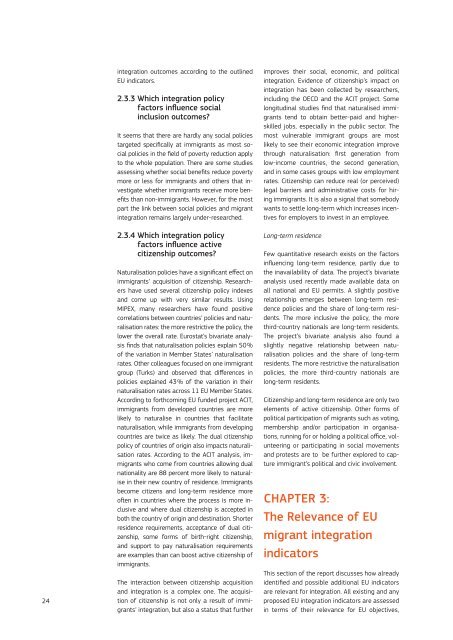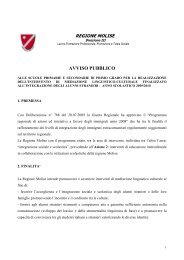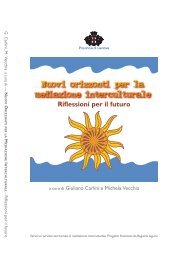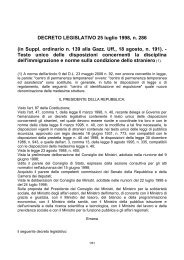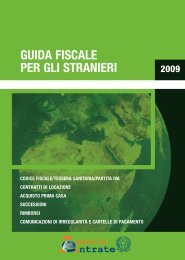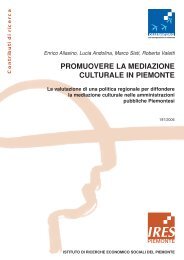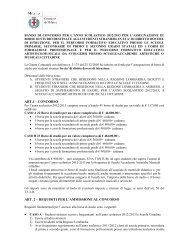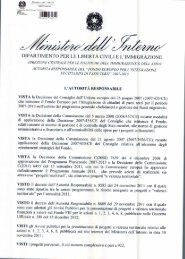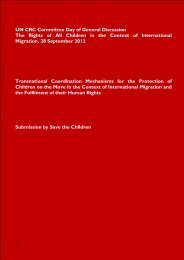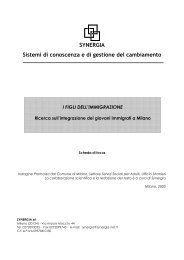Using EU Indicators of Immigrant Integration - European ...
Using EU Indicators of Immigrant Integration - European ...
Using EU Indicators of Immigrant Integration - European ...
- No tags were found...
Create successful ePaper yourself
Turn your PDF publications into a flip-book with our unique Google optimized e-Paper software.
24integration outcomes according to the outlined<strong>EU</strong> indicators.2.3.3 Which integration policyfactors influence socialinclusion outcomes?It seems that there are hardly any social policiestargeted specifically at immigrants as most socialpolicies in the field <strong>of</strong> poverty reduction applyto the whole population. There are some studiesassessing whether social benefits reduce povertymore or less for immigrants and others that investigatewhether immigrants receive more benefitsthan non-immigrants. However, for the mostpart the link between social policies and migrantintegration remains largely under-researched.2.3.4 Which integration policyfactors influence activecitizenship outcomes?Naturalisation policies have a significant effect onimmigrants’ acquisition <strong>of</strong> citizenship. Researchershave used several citizenship policy indexesand come up with very similar results. <strong>Using</strong>MIPEX, many researchers have found positivecorrelations between countries’ policies and naturalisationrates: the more restrictive the policy, thelower the overall rate. Eurostat’s bivariate analysisfinds that naturalisation policies explain 50 %<strong>of</strong> the variation in Member States’ naturalisationrates. Other colleagues focused on one immigrantgroup (Turks) and observed that differences inpolicies explained 43 % <strong>of</strong> the variation in theirnaturalisation rates across 11 <strong>EU</strong> Member States.According to forthcoming <strong>EU</strong> funded project ACIT,immigrants from developed countries are morelikely to naturalise in countries that facilitatenaturalisation, while immigrants from developingcountries are twice as likely. The dual citizenshippolicy <strong>of</strong> countries <strong>of</strong> origin also impacts naturalisationrates. According to the ACIT analysis, immigrantswho come from countries allowing dualnationality are 88 percent more likely to naturalisein their new country <strong>of</strong> residence. <strong>Immigrant</strong>sbecome citizens and long-term residence more<strong>of</strong>ten in countries where the process is more inclusiveand where dual citizenship is accepted inboth the country <strong>of</strong> origin and destination. Shorterresidence requirements, acceptance <strong>of</strong> dual citizenship,some forms <strong>of</strong> birth-right citizenship,and support to pay naturalisation requirementsare examples than can boost active citizenship <strong>of</strong>immigrants.The interaction between citizenship acquisitionand integration is a complex one. The acquisition<strong>of</strong> citizenship is not only a result <strong>of</strong> immigrants’integration, but also a status that furtherimproves their social, economic, and politicalintegration. Evidence <strong>of</strong> citizenship’s impact onintegration has been collected by researchers,including the OECD and the ACIT project. Somelongitudinal studies find that naturalised immigrantstend to obtain better-paid and higherskilledjobs, especially in the public sector. Themost vulnerable immigrant groups are mostlikely to see their economic integration improvethrough naturalisation: first generation fromlow-income countries, the second generation,and in some cases groups with low employmentrates. Citizenship can reduce real (or perceived)legal barriers and administrative costs for hiringimmigrants. It is also a signal that somebodywants to settle long-term which increases incentivesfor employers to invest in an employee.Long-term residenceFew quantitative research exists on the factorsinfluencing long-term residence, partly due tothe inavailability <strong>of</strong> data. The project’s bivariateanalysis used recently made available data onall national and <strong>EU</strong> permits. A slightly positiverelationship emerges between long-term residencepolicies and the share <strong>of</strong> long-term residents.The more inclusive the policy, the morethird-country nationals are long-term residents.The project’s bivariate analysis also found aslightly negative relationship between naturalisationpolicies and the share <strong>of</strong> long-termresidents. The more restrictive the naturalisationpolicies, the more third-country nationals arelong-term residents.Citizenship and long-term residence are only twoelements <strong>of</strong> active citizenship. Other forms <strong>of</strong>political participation <strong>of</strong> migrants such as voting,membership and/or participation in organisations,running for or holding a political <strong>of</strong>fice, volunteeringor participating in social movementsand protests are to be further explored to captureimmigrant’s political and civic involvement.Chapter 3:The Relevance <strong>of</strong> <strong>EU</strong>migrant integrationindicatorsThis section <strong>of</strong> the report discusses how alreadyidentified and possible additional <strong>EU</strong> indicatorsare relevant for integration. All existing and anyproposed <strong>EU</strong> integration indicators are assessedin terms <strong>of</strong> their relevance for <strong>EU</strong> objectives,


